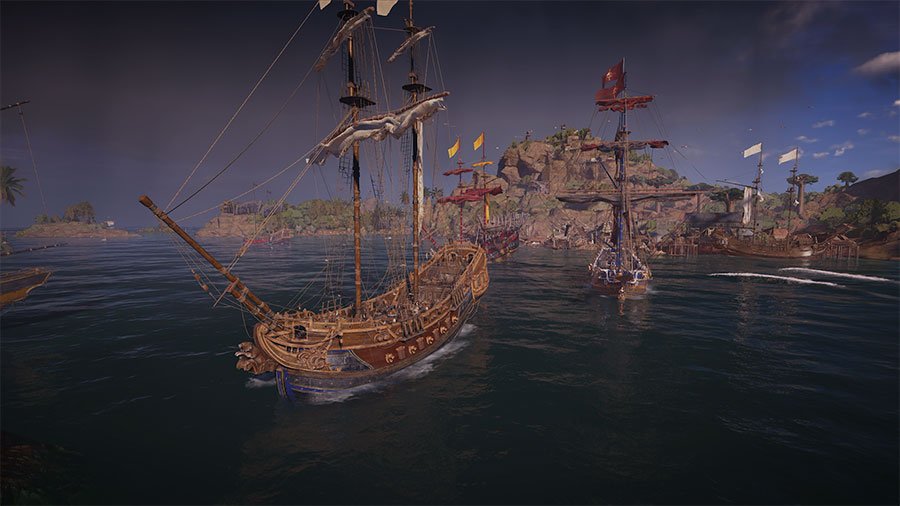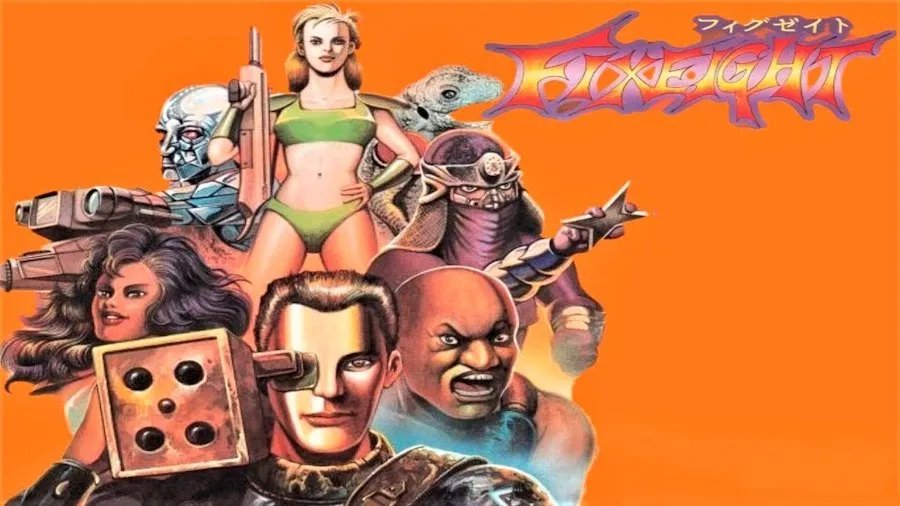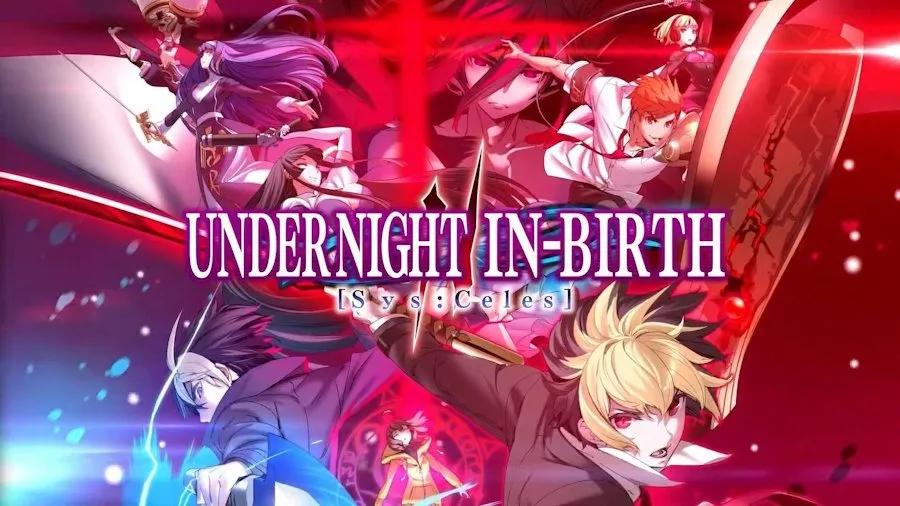Overall – 80%
80%
If you can stomach the rough seas of the early game, Skull & Bones has a bounty of live-service content on offer. The end-game mechanics and loot loop rely completely and entirely on the combat system that, thankfully, is one that delivers with every firing of a cannon. Taking over towns and cities, conquering trade routes, climbing the leaderboards – Skull & Bones is a thrilling ride. It’s just a shame that it can take 30-40 hours to get there.
We’ve traversed the tumultuous streets of Paris amidst the chaos of the French Revolution, braved the cobblestone alleys of Victorian London, and clashed with deities in the ancient sands of Egypt. We’ve even sailed alongside fierce Vikings in their quest to conquer Britain.
A decade has passed since the launch of Assassin’s Creed: Black Flag and the beginning of Skull & Bones’ development journey, yet it hasn’t all been smooth sailing. Enduring numerous delays, shifts in genre, and geographical transitions from fantastical realms to real-world settings, development has struggled through troubled waters.
Regrettably, the aftermath of that journey leaves Skull & Bones grappling to define its identity. It’s a clash of compelling ideas and concepts, each brimming with potential, yet few have been afforded the necessary time to flourish. While there are undoubtedly elements of Skull & Bones I’ve grown to love, its inherent challenges are evident for all to witness.
Skull & Bones Review

Usually, this is the part where I delve into my experience with the game’s storyline. Taking a moment to explore significant characters, dissect important plot events, and offer my overall perspective on the narrative direction before transitioning to other meaty parts of the experience. In the case of Skull & Bones, well, the story doesn’t offer all that much. Relationships feel forced and rushed, never given the time to develop through trial and tribulation, and the overall plot just feels flat.
After completing just a handful of seafaring missions, I found myself unexpectedly hailed as a hero by the pirates standing on the docks of Sainte-Anne. John Scurlock, the esteemed Kingpin of Sainte-Anne, now celebrating my achievements, when just moments before he was mocking my lack of experience. I struggled to remain interested in the lives and motives of the characters I encountered, and feeling rushed to develop that interest didn’t help the situation.
It’s a disappointing execution of the story, but as is often the case with live-service games, the story is rarely a focal point. It’s a few hours in a grand adventure, often spanning hundreds or thousands of hours. So, leaving the underwhelming story off the stern, many other areas of the game are truly remarkable.
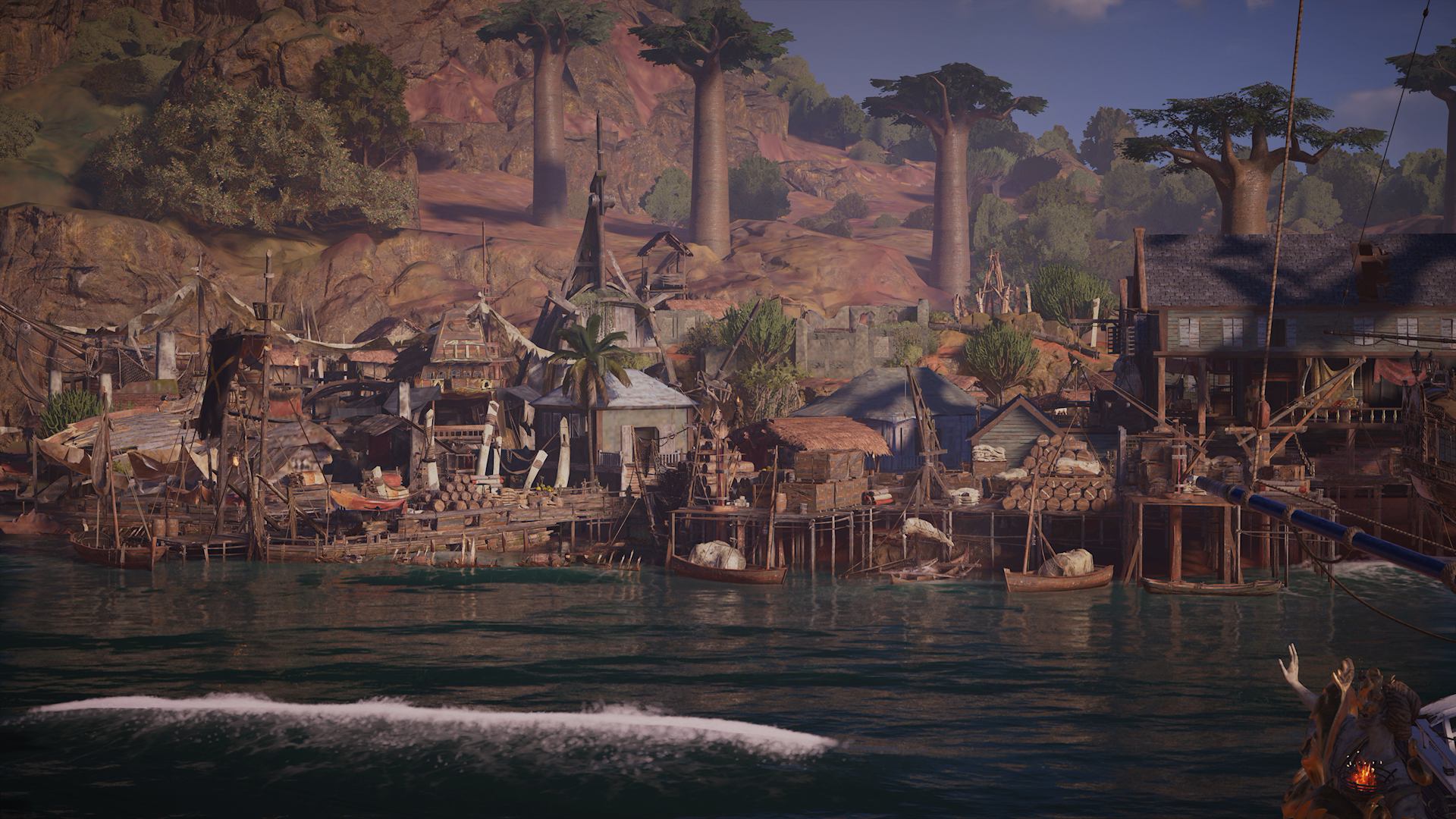
Despite the hurdles of delays and change of genre, one key component was clear in the development of Skull & Bones: naval combat was destined to be its cornerstone. This is evident by the level of quality and polish in the ship-to-ship combat, a captivating and thrilling experience from start to finish. It offers a deep layer of strategy and tactical thinking as you analyze the movements of enemy ships, looking to capitalize on the smallest mistake. This is all the while providing pure satisfaction derived from just blowing the ship out of something.
Every encounter, even the trivial battles against enemies offering little to no rewards, is an enjoyable one. Lining up the perfect mortar shot onto the weak point of a moving enemy ship, sniping enemy flares before they call for reinforcements, watching three torpedoes hit at maximum range for insane damage; the combat in Skull & Bones is quite simply at the top of its class.
This is enhanced by a robust ship class and customization suite that offers a surprising variety of build options and loadouts. Each boat can be tailored to suit a number of different play styles, with a variety of different armaments and furniture pieces designed to support a holy trinity style approach with tank, DPS, and support. It may be difficult to swallow that your support ship is firing balls of goo to help heal your hull, but it works nonetheless.
While clearly designed to support co-operative and multiplayer play, each of these roles functions perfectly well for solo players. Choosing the bulky tank class of vessels, I was able to sustain incredible levels of damage whilst ensuring enemy vessels prioritized me over my allies. Switching up to one of the ramming style DPS ships, complete with a bow-mounted flamethrower, plowing directly into enemies and leaving a pile of flotsam in my wake was equally fun. It’s a system that is perfectly suited to the live-service model, one that has a multitude of avenues for advancements and improvements but one that, alone, may struggle to keep players engaged through the rough seas of the early game.
Skull & Bones doesn’t really leave the dock for the first 30 to 40 hours. The early hours, including the immediately forgettable intro, are a combination of tutorial missions and fetch quests. Fetch quests that, even with the most beautiful of oceans and a fantastic combat system, quickly become stale. I was approaching the 35-hour mark when I hit Kingpin rank, the final rank before the prestige-style grind enters the arena.
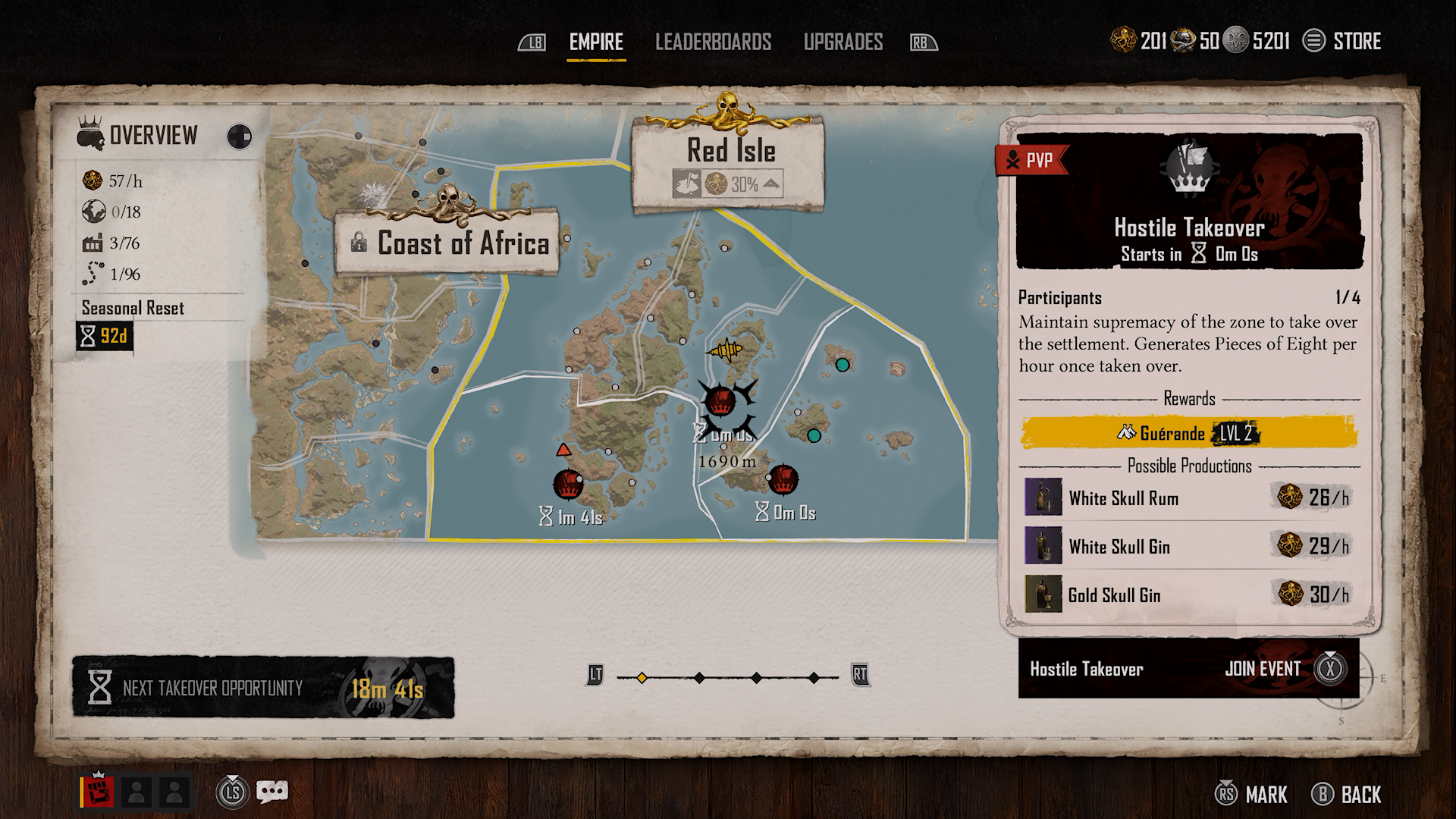
It wasn’t until nearly 40 hours into the Skull & Bones adventure that the true essence of the game unfolded. The vast expanse of the Empire stretches across three distinct regions: the Coast of Africa, Red Isle, and East Indies. Each features different locations such as foundries, encampments, and settlements. I had to grapple with frustrating time limitations and the inherent drawbacks of the GaaS model, but eventually I could seize control of these strategic points, tapping into their resources to amass Pieces of Eight, the top-tier currency. These Pieces of Eight serve as the key to unlocking much of the end-game content, from named weapons to ship cosmetics and pirate outfits, bringing the live-service elements of the game to life.
It’s a completely fresh gameplay loop from the rest of the game. Sure, it’s still very much a glorified fetch quest with epic combat, but the Empire system is where you find the best rewards, the biggest battles, and the most epic PvP encounters the game has to offer. Prior to unlocking this feature, the largest battle I had was with three enemy ships. After my first attempt at a hostile takeover of a territory, that number was closer to 20. After capturing a location, funding its resource development, and then attempting to grab your haul, you have to travel back and deposit it at one of your central hubs – or you can risk it all and take a double-or-nothing gamble on reaching another location but with other players at your heels.
There is definitely a potential for problems in the very latter stages of the live-service grind. It will be relatively easy to max out multiple locations, stack up near infinite supplies of silver, and end up managing more of an economic simulator than a pirate game, but hopefully Ubisoft can address that before the average player gets there.
Finally, touching on an area of the game that struggles to find its place as much as the story, there is controlling of the actual character. You cannot walk around on your ship, and there is no on-foot combat. Rather, it’s purely an avatar for navigating towns, cities, and camps – most of which are very tiny locations that serve little more purpose than a menu with an environment. It feels a bit sour, considering the what-if scenario. Overall, it’s a minor, annoying time sink at worst.

I played through most of the game on the Xbox Series X but also played a fair amount on PlayStation 5, both co-op and solo play. Skull & Bones is perfectly suited for solo players, although the more challenging and exciting missions are definitely geared towards co-op and multiplayer play. It’s a lot of fun solo but whack that dial way up if you can sail with some friends.
If you can stomach the rough seas of the early game, Skull & Bones has a bounty of live-service content on offer. The end-game mechanics and loot loop rely completely and entirely on the combat system that, thankfully, is one that delivers with every firing of a cannon. Taking over towns and cities, conquering trade routes, climbing the leaderboards – Skull & Bones is a thrilling ride. It’s just a shame that it can take 30-40 hours to get there.
This review of Skull & Bones was primarily done on the Xbox Series X, although the reviewer also played the PlayStation 5 version. Digital codes were provided by the publisher
If you can stomach the rough seas of the early game, Skull & Bones has a bounty of live-service content on offer. The end-game mechanics and loot loop rely completely and entirely on the combat system that, thankfully, is one that delivers with every firing of a cannon.
The fusion of Indian mythology and vertical shoot-em-ups might seem a little unorthodox, but these two fields come together to create something exotic with the release of Bitwave Games and Toaplan’s Vimana on Steam. The titular Vimana craft is at one’s disposal – should players step into the cockpit of this spacefaring adventure?
A run-and-gun from days gone by (1992, to be precise!), Bitwave Games and Toaplan are giving players all the firepower they could ever want with the Steam release of FixEight. Should players bring others along for some good ol’ co-op blasting, or does this throwback feel a little musty?
A new numbered entry in the series, FRENCH-BREAD and Arc System Works’ UNDER NIGHT IN-BIRTH II Sys:Celes carries the series forward after a strong reception from fans and critics – including us! The series has established itself as a cult classic after multiple versions; does this full measure mark a substantial leap for the series?
- SEO Powered Content & PR Distribution. Get Amplified Today.
- PlatoData.Network Vertical Generative Ai. Empower Yourself. Access Here.
- PlatoAiStream. Web3 Intelligence. Knowledge Amplified. Access Here.
- PlatoESG. Carbon, CleanTech, Energy, Environment, Solar, Waste Management. Access Here.
- PlatoHealth. Biotech and Clinical Trials Intelligence. Access Here.
- Source: https://www.gamersheroes.com/honest-game-reviews/skull-bones-review-troubled-waters/




